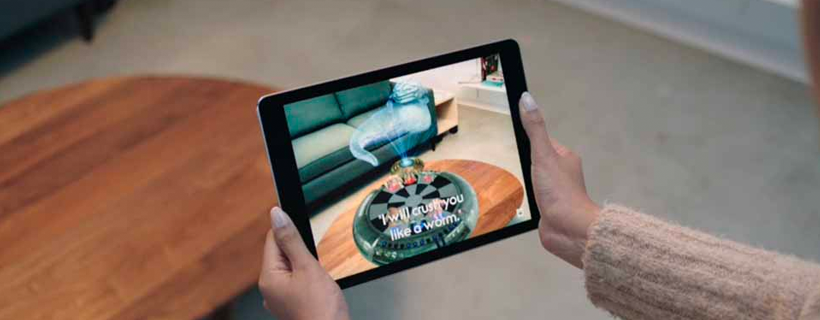Here’s our take on the most important announcements from Apple’s WWDC 2017 keynote event:
-
- New AR Developer Tools. ARKit is the single most important announcement from today’s keynote, enhancing iOS 11 devices for augmented reality. ARKit instantly creates a multi-100m user base for AR developers over night, which compares to Google’s Tango platform which we believe has well under 10 million users. We believe AR will be the core technology that eventually replaces the smartphone. Today’s announcement lays the groundwork for Apple to succeed in that future as ARKit represents the first tangible commitment from Apple to establish itself as the leader in the race to build a dominant AR-driven OS. The company will build AR-enhanced iPhones that include depth cameras and other additional hardware in the future, but they will also bring along the existing iOS device base to bring AR to all sooner than later.
- New VR Developer Tools. Apple also dedicated a meaningful chunk of the keynote to introduce new technology, announcing support for SteamVR, Unity and Unreal. The company also announced Metal for VR, which supports VR content creation. These announcements show that Apple views VR as an important computing paradigm in the future, a market they have been shut out of to date because of their focus on integrated graphics and downplaying the powering of external hardware. We believe that today’s announcements represent a small step toward eventually launching a VR platform for iPhone.
- New AI Developer Tools. Apple showed an increasing focus on artificial intelligence across its product line. The company announced Core ML, a new machine learning API to make AI faster on mobile devices. Ultimately, this will enable on-device processing for AI with data privacy across iOS, macOS, watchOS, and tvOS. Robust AI requires: 1) broad understanding and learning across devices, 2) advanced natural language processing, and 3) advanced computer vision. Apple highlighted its strengths across all three of those requirements throughout today’s keynote.
- HomePod. Natural language will be a key user interface in the future of computing and Apple is playing catchup today with HomePod. Based on the product demo at WWDC, HomePod clearly offers a premium audio experience. The company is differentiating the device from other home assistants by focusing on music, but make no mistake: Siri is the killer app on HomePod. Apple fully understands the importance of Siri for HomePod and we expect updates to Siri when HomePod ships in December. We expect Apple to gradually open Siri up to developers and create an Alexa Skills-like offering for voice based apps. Today, developers are only able to integrate Siri skills if their apps fall within nine app domains (ride booking, restaurant reservations, etc.), but that won’t cut it in the future.
And here’s our take on the rest of the announcements from WWDC:
- ApplePay for person-to-person transactions. Apple is now the only company to integrate a comprehensive payments platform directly into the OS. The significance of OS integration will only increase as computing becomes more immersive in the screenless future. A clear negative for PayPal’s Venmo.
- macOS High Sierra. Support for VR will excite some developers and Mac gamers who have avoided the Mac.
- watchOS 4. We’re looking forward to the Siri watch face.
- iOS 11. Classic Apple software updates to keep iOS ahead of the pack. New iPad features for iOS show that Apple is trying to push the limits of the iPad as a productivity device. We think it might be enough to bend the growth curve from negative to flat.
- New iMacs and MacBook Pros. An unexpected price cut on the most popular MacBook Pro.
- New 10.5″ iPad Pro. Makes sense given that Apple’s getting rid of the 9.7″ iPad Pro. Generally, the iPad line makes more sense now.
- Amazon Prime Video on Apple TV. More of a negative for Netflix than a positive for Apple or Amazon.
- Redesigned App Store. Unifying the UI across iOS.
Hinting Towards an AR-enhanced iPhone.
Today’s announcement of ARKit leaves us incrementally more confident that an AR-enhanced iPhone is coming this fall. The software groundwork has been laid for Apple to unveil new iPhones with dual cameras across all models (regardless of screen size), a new 3D mapping chip, and perhaps an edge-to-edge display with no hardware home button. Apple’s new Siri UI showed a Siri button that looks like it could be a Siri-specific home button on a home button-less iPhone. And the new design of the dock, which is now self-contained in iOS 11 (as opposed to the edge-to-edge dock design in iOS 10), makes more sense in a UI with display area below the button. The next iPhone continues to look like it will be the most important update to the device since iPhone 6.
Disclaimer: We actively write about the themes in which we invest: artificial intelligence, robotics, virtual reality, and augmented reality. From time to time, we will write about companies that are in our portfolio. Content on this site including opinions on specific themes in technology, market estimates, and estimates and commentary regarding publicly traded or private companies is not intended for use in making investment decisions. We hold no obligation to update any of our projections. We express no warranties about any estimates or opinions we make.
